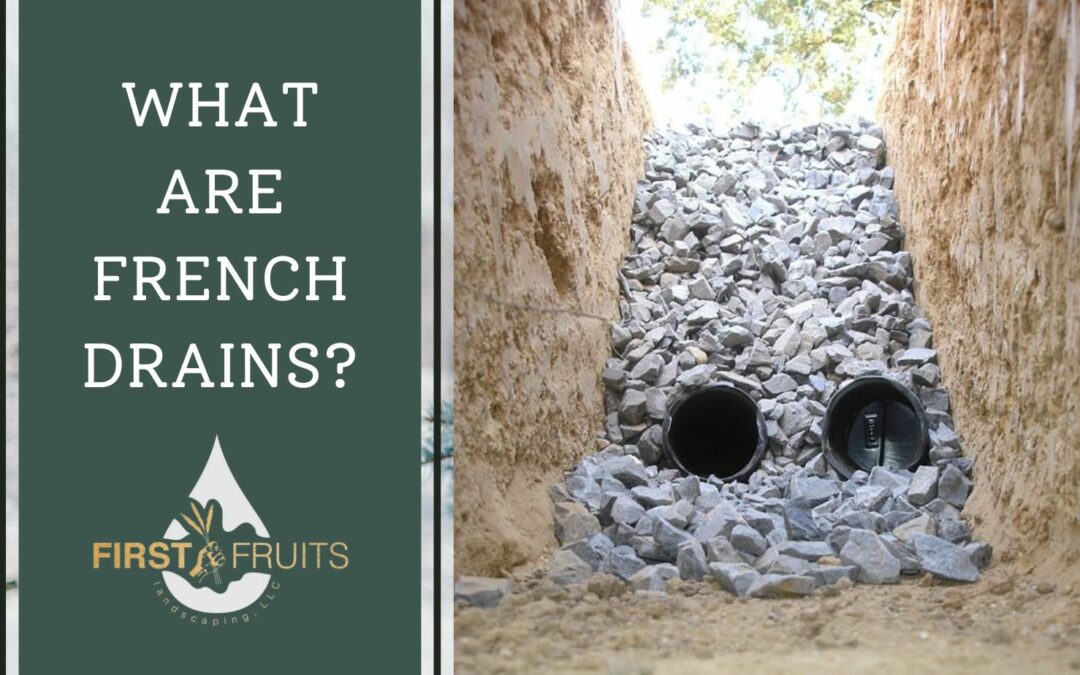Water flows downhill and will always find the easiest route. You need to help steer water in the direction you want it to go, which is exactly what a French drain does. A french drain is a slightly sloped trench filled with round gravel and a pipe that directs water away from your house. The drain is named after Henry French, who promoted this idea in a book about drainage on a farm.
How a French Drain Works
French drains are easy pathways for water to flow through. Water will run through a gravel-filled trench in a perforated pipe and the bottom of the trench. The bottom of the trench should be slopped 1 inch every 8 feet in the direction you want water flowing. You can divert water to a low-lying area, a drainage ditch, a dry well, or the street.
When You Need a French Drain
A french drain would be a great solution if you are dealing with surface water. This would be a soggy lawn or a driveway that gets washed out. You also might consider a french drain if water is getting into your basement or you are building a retaining wall on the hillside of your property.
Surface Water
If you are dealing with surface water, install a shallow french drain. This should extend horizontally across your property. It should be uphill of the area you want to dry out.
Basement
If water is getting into your basement you want to install a deep french drain. This can sometimes be called a footing drain. This should run the perimeter of your home and intercept the water before it enters your basement. These are much easier to install during home construction rather than after.
Retaining Wall
You want to add a french drain behind the stones or blocks if you are building a retaining wall. If this isn’t done properly, water moving downhill will build up. You want the pipe to rest on the same gravel or concrete footing that is supporting the retaining wall. Landscaping cloth should be used across the base and up the slope before adding the pipe and drain gravel so you can prevent the drain from clogging.
How Deep Does a French drain need to be?
A French drain is a type of drain that is used to redirect surface water or ground water away from a specific area, such as a foundation or a low-lying area prone to flooding. The depth of a French drain depends on a number of factors, including the specific purpose of the drain, the type of soil and the water table in the area.
In general, French drains should be installed at a depth of at least 18 inches, but it is often necessary to dig deeper to ensure that the drain is effective. If the drain is being installed to redirect surface water, it may need to be installed at a depth of 2 to 3 feet or more. If the drain is being installed to redirect ground water, it may need to be installed at a depth of 4 to 6 feet or more.
It is important to consult with a professional or refer to local building codes when installing a French drain to ensure that it is installed properly and at the appropriate depth.
What is the difference between a French drain and a trench drain?
A French drain and a trench drain are both types of drains that are used to redirect water away from a specific area. However, there are some key differences between the two types of drains:
- A French drain is a type of drain that is used to redirect surface water or groundwater away from a specific area. It consists of a sloped trench that is filled with gravel or other porous material and a perforated pipe that is used to carry water away from the drained area. French drains are often used to prevent water from pooling around foundations or to prevent flooding in low-lying areas.
- A trench drain, on the other hand, is a type of drain that is used to redirect surface water or stormwater away from a specific area. It consists of a narrow, open-bottomed channel that is installed in a trench and is lined with a grate or other surface to allow water to flow through it. Trench drains are often used to divert water away from streets, sidewalks, driveways, and other paved surfaces.
In summary, the main difference between a French drain and a trench drain is the type of water that they are designed to redirect and the materials that they are made from. French drains are typically used to redirect ground water or surface water, and they are made from a perforated pipe and gravel or other porous material. Trench drains, on the other hand, are used to redirect surface water or stormwater, and they are made from a channel lined with a grate or other surface.
In Conclusion
You may have never heard of a french drain, but if you are dealing with any of these water issues around your property, it could be a great solution for you. Retaining walls are popular and a great landscaping tool if you have a sloped landscape, but you can’t forget about the aspect of water draining and how that would affect the retaining wall. To make sure you have these things done correctly, work with a professional company. That’s why we are here! For all of your landscaping needs, contact us!

